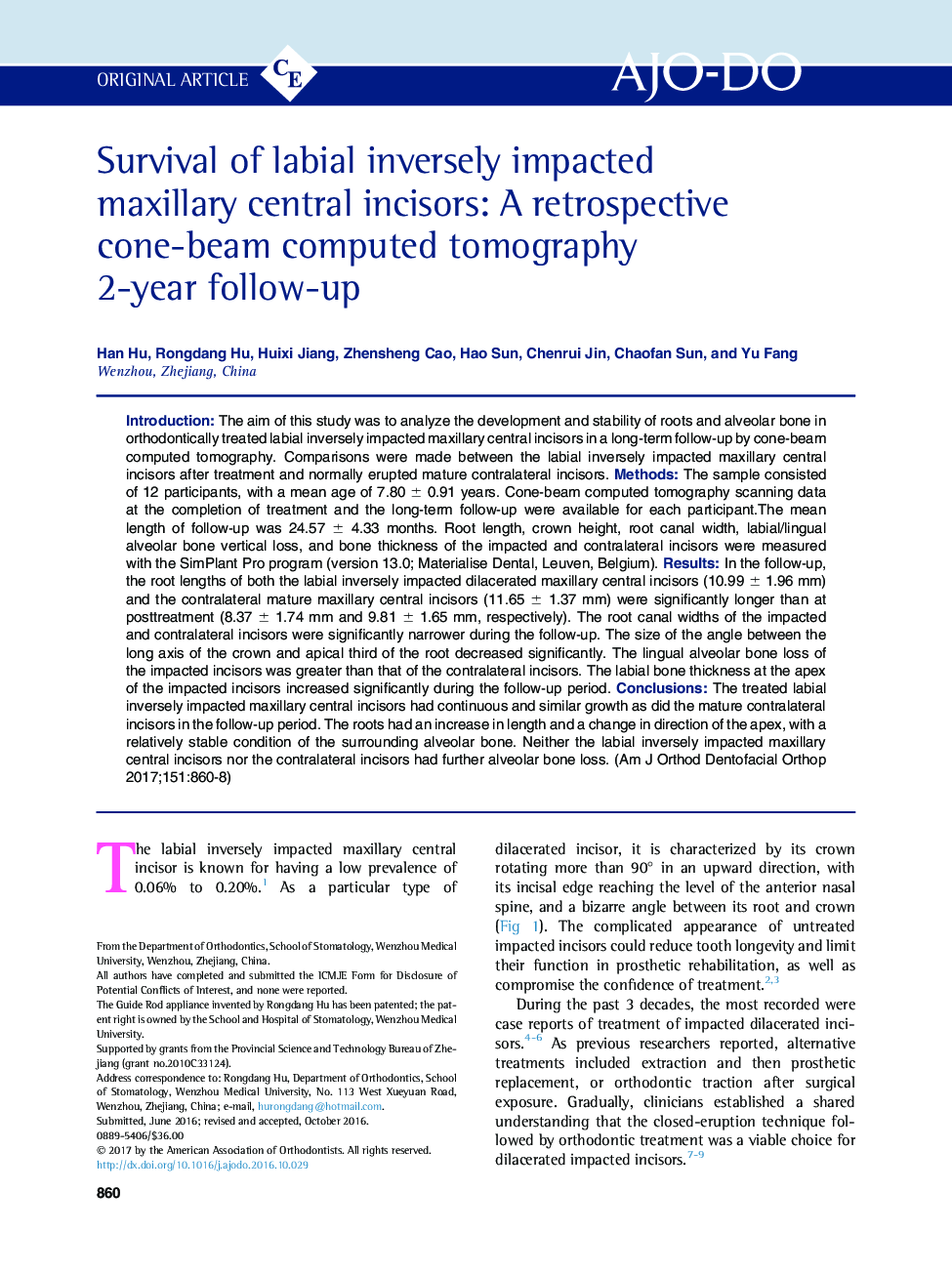| Article ID | Journal | Published Year | Pages | File Type |
|---|---|---|---|---|
| 5637679 | American Journal of Orthodontics and Dentofacial Orthopedics | 2017 | 9 Pages |
â¢We analyzed unilateral labial inversely impacted maxillary central incisors.â¢The mean follow-up period for 12 patients was 24.57 ± 4.33 months.â¢Growth was continuous and similar to that of mature contralateral incisors.â¢Prognosis for these teeth after early treatment was positive.
IntroductionThe aim of this study was to analyze the development and stability of roots and alveolar bone in orthodontically treated labial inversely impacted maxillary central incisors in a long-term follow-up by cone-beam computed tomography. Comparisons were made between the labial inversely impacted maxillary central incisors after treatment and normally erupted mature contralateral incisors.MethodsThe sample consisted of 12 participants, with a mean age of 7.80 ± 0.91 years. Cone-beam computed tomography scanning data at the completion of treatment and the long-term follow-up were available for each participant.The mean length of follow-up was 24.57 ± 4.33 months. Root length, crown height, root canal width, labial/lingual alveolar bone vertical loss, and bone thickness of the impacted and contralateral incisors were measured with the SimPlant Pro program (version 13.0; Materialise Dental, Leuven, Belgium).ResultsIn the follow-up, the root lengths of both the labial inversely impacted dilacerated maxillary central incisors (10.99 ± 1.96 mm) and the contralateral mature maxillary central incisors (11.65 ± 1.37 mm) were significantly longer than at posttreatment (8.37 ± 1.74 mm and 9.81 ± 1.65 mm, respectively). The root canal widths of the impacted and contralateral incisors were significantly narrower during the follow-up. The size of the angle between the long axis of the crown and apical third of the root decreased significantly. The lingual alveolar bone loss of the impacted incisors was greater than that of the contralateral incisors. The labial bone thickness at the apex of the impacted incisors increased significantly during the follow-up period.ConclusionsThe treated labial inversely impacted maxillary central incisors had continuous and similar growth as did the mature contralateral incisors in the follow-up period. The roots had an increase in length and a change in direction of the apex, with a relatively stable condition of the surrounding alveolar bone. Neither the labial inversely impacted maxillary central incisors nor the contralateral incisors had further alveolar bone loss.
